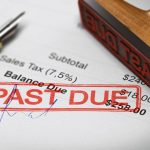Key takeaways
- The list of equipment loan documents required varies based on the lender, type of loan and type of equipment being purchased
- Documents a lender may require include business plan, multiple financial statements, personal and business tax statements and other legal documents
- The main objective of the documents is to give a snapshot of a business’s viability and its ability to make loan repayments for the long term
According to the 2023 Small Business Credit Survey, 13 percent of small businesses applied for an auto or equipment loan in 2023, making these the fourth most common options applied for. Compared to other business loans, these loans held the highest approval rates — 73 percent — with another 18 percent partially approved.
When applying for an equipment loan, the lender will provide you with its own list of documents required to be approved. The list can vary based on the lender you’re working with, the type of loan and the types of equipment you’re buying. For example, online lenders often keep documentation to a minimum for a quick application and approval process.
In general, these are some documents you may need to show that your business can repay the equipment loan.
Equipment loan documents needed
Equipment loans may require you to submit a variety of documents when you apply, including documents about your business, its finances and the equipment you’re buying. Common equipment loan documents include:
Business plan
A business plan speaks volumes about your strategy for how you’ll grow and become profitable. Some lenders require a business plan to learn more about the business, its operations, overall market conditions and financial projections. Details to include in your business plan:
- Key objectives
- Target market
- Description of products and services
- Marketing strategy
- Market research into competitors and target customers
- Mission statements
- Current financial picture
- Financial projections, including the break-even point
Financial statements
Lenders request multiple financial documents to review your business’s overall financial health. They use these statements to predict whether your business has the ability to repay the loan and to determine the loan amount you qualify for.
Have these financial documents on hand when you apply:
- Bank statements for a picture of cash flow
- Balance sheet to show assets and liabilities
- Profit and loss statement
- Revenue forecasts
- Personal and business income tax statement from the past three years
- Personal and business credit history
Bankrate insight
Purchase or franchise agreement
Next, if you bought your business from another individual, you will also need the business purchase agreement. A business purchase agreement will have information about the buyer, seller and equipment or assets purchased.
It also outlines the responsibilities that the buyer and seller have toward the business after the sale, important if the previous owner will still retain some ownership or employment.
Likewise, if your business is a franchise, you’ll need to provide the franchise agreement granting the rights to operate under the franchised brand.
Accounts receivable and accounts payable
Along with the other financial statements required for an equipment loan, lenders also need an income statement showing your business’s revenue and expenses. Seeing all accounts receivable and payable helps the lender understand your current financial position.
Bankrate insight
Appraisal
Depending on the types of equipment or how much equipment you’re buying, the lender may want an appraisal to determine the commercial equipment’s true value. The lender is more likely to require this documentation for used equipment since the valuation will factor in the equipment’s current wear and tear.
Legal documents
Finally, lenders who offer equipment loans will need to see that your business is compliant with registration and licensing requirements to run legally. Documents you may need to provide:
- Business entity documents, such as articles of incorporation
- Business licenses
- Commercial lease, if applicable
- Contracts with third parties
- Employer Identification Number (EIN)
Bankrate insight
Bottom line
The documentation needed for a small business equipment loan is similar to other business loans, except that the lender may need an appraisal for the equipment you’re buying. The main objective is that these documents give a snapshot of your business’s viability and that its finances can handle loan repayments for the long term. The list of required documents is ultimately at the discretion of the lender you choose for your equipment loan.
Frequently asked questions
-
An equipment loan agreement is a contract in which a lender grants a business the funds necessary to purchase commercial equipment. The agreement spells out the fees, terms of repayment and what happens under conditions like a default. It also states the collateral used to back the loan, which is typically the equipment being financed.
-
Yes, you can deduct the annual loan interest paid when you file your business tax return. You can also take tax deductions for depreciation. You can either claim the depreciation each year during the equipment’s usable life. Or you can deduct some or all of the equipment’s cost during the first year it’s placed in service, up to a maximum deduction of $1.16 million in 2023.
-
Interest rates for equipment loans can range anywhere from 4.99 percent to 35 percent, though the exact rates depend on your business credit history and the lender. Equipment loans get lower interest rates than other loans because it’s secured by the equipment as an asset, lowering the risk for the lender.
Read the full article here


















